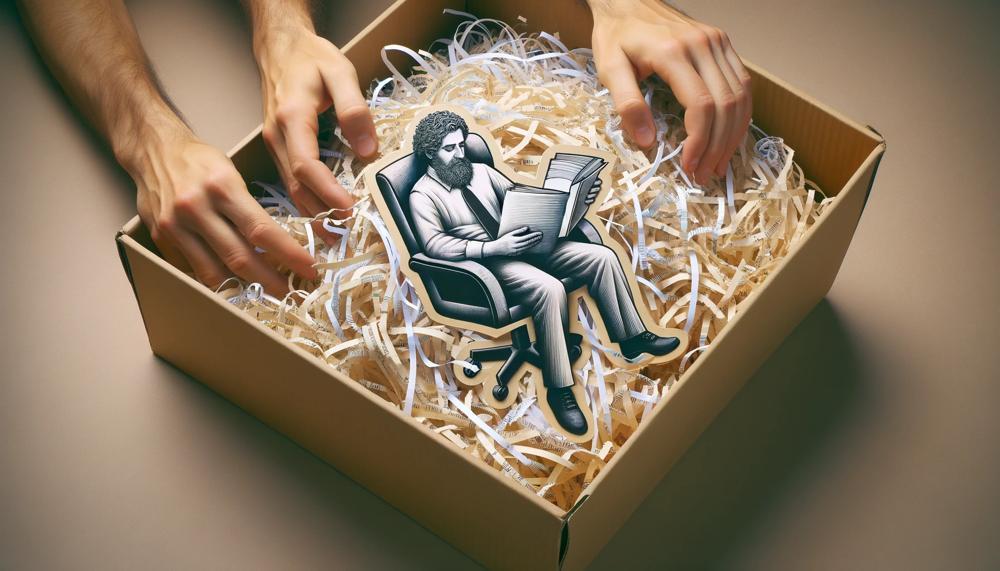Every year, an astonishing 2.5 million tons of paper are shredded in the United States alone, representing a significant portion of both waste and potential recycling material. Despite its mundane appearance, the journey of shredded paper from document to disposal is fraught with both opportunities and obstacles.
Whether it’s safeguarding sensitive information or promoting environmental sustainability, the way we handle shredded paper matters more than most of us realize.
So, how do you dispose of shredded paper properly?
Disposing of shredded paper properly can be a bit tricky as it can’t always be recycled in the usual way. Here are some steps you can follow:
- Check with your local recycling service: Reach out to your area’s recycling facility and ask them if they accept shredded paper in recycling bins. Some areas may accept it if you follow specific guidelines, but others may not accept shredded paper at all.
- Seal the shredded paper in a recyclable bag: If your local recycling facility accepts shredded paper, it’s best to put all of your shredded paper into a paper or recyclable plastic bag.
- Once the bag is full, tie the handles together or fold over the edge so none of the scraps can escape.
- Compost it: If your city allows it, you can put shredded paper in a green compost bin. Mix the shredded paper with the rest of your compost so it doesn’t blow around or come loose. However, don’t compost shredded paper that’s colored or glossy since it contains chemicals or dyes that could get into the soil and affect the plants.
- Shredding events: Look for shredding events in your area where you can bring your documents or shredded paper to get rid of. The person running the shredder will pour your shredded paper into the machine so it’s destroyed and recycled properly.
Join us as we delve into the intricacies of disposing of shredded paper properly. Not only will you learn how to protect your information, but you’ll also discover how to contribute positively to environmental conservation.
So, grab a cup of coffee, and let’s get into the nitty-gritty of turning shredded paper from a security risk and environmental burden into a valuable resource.
Contents
Steps to Dispose of Shredded Paper Properly
| Step | Action | Details |
| 1 | Assess Recyclability | Check if the shredded paper is purely paper. Mixed materials like plastic or metal mean it can’t be recycled. |
| 2 | Recycling | If recyclable, place the shredded paper in a labelled bin or bag specifically for recycling to ensure it is processed properly. |
| 3 | Alternative Uses | If not recyclable, consider using as packing material or adding to compost, as long as there’s no glossy or coated paper. |
| 4 | Secure Disposal | For non-recyclable or sensitive paper, secure in a bag or container mixed with other waste to disguise contents before trashing. |
| 5 | Professional Shredding | If dealing with large amounts, employ a professional shredding service, which may offer recycling options. |

Each step in the table provides a clear and direct action to take, ensuring that shredded paper is disposed of responsibly while considering environmental impact and personal data security.
Tips About How to Dispose Of Shredded Paper Properly
Here are some effective strategies for properly disposing of shredded paper, ensuring security and environmental responsibility:
| Method | Description | Considerations |
| Recycling | Shredded paper can be recycled but requires careful handling to avoid contamination. | Check with local recycling programs for specific guidelines as some do not accept shredded paper. |
| Composting | Shredded paper is an excellent carbon source for compost piles, helping to balance nitrogen-rich materials. | Ensure the paper is ink-free and not glossy to avoid toxins in the compost. |
| Use as Packing Material | Repurpose shredded paper as cushioning for packing fragile items. | Store dry and clean to ensure it remains useful for packing purposes. |
| Animal Bedding | Soft shredded paper can serve as bedding for small pets such as hamsters and guinea pigs. | Use non-toxic, unscented, and unbleached paper to ensure it’s safe for animals. |
| Security Disposal | Mix shredded paper with other waste or dispose of it in smaller batches across different days to enhance security. | Consult local waste management policies to ensure compliance with security measures. |
| Pick-up Services | Specialised pick-up services from recycling centres can securely handle sensitive documents. | There might be a fee, but it ensures professional handling and disposal of sensitive papers. |
These tips cater to both enhancing the security of your personal information and promoting environmentally friendly practices.
Conclusion
As we draw near the end of our exploration into the proper disposal of shredded paper, it’s clear that the simple act of shredding documents is just the beginning of a mindful journey towards environmental stewardship and data security. With millions of tons of paper shredded annually, each shred has the potential to either contribute to landfill waste or become a valuable resource through thoughtful disposal.
Properly disposing of shredded paper involves more than tossing it into a recycle bin. It’s about making informed decisions that respect both our planet and personal privacy. First and foremost, assess whether your shredded paper is recyclable or if it should be repurposed or securely disposed of. For recyclable paper, use clear, labeled bags to ensure it is processed correctly, avoiding any contamination with non-paper materials.
If recycling isn’t an option, consider turning this seemingly mundane by-product into garden mulch, compost material, or even bedding for animals, each method breathing new life into what would otherwise be waste.
For those handling sensitive documents, employing services that guarantee secure shredding and disposal can safeguard against data breaches, thus maintaining confidentiality.





